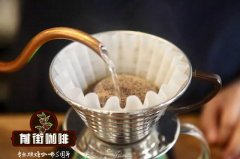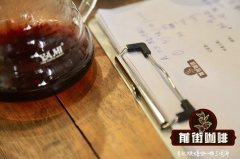What is Pacamara coffee? How should honey handle Pacamara coffee drink?

Professional coffee knowledge exchange more coffee bean information please follow the coffee workshop (Wechat official account cafe_style)
Pacamara varieties are not naturally evolved or hybridized, but are cultivated by a group of excellent coffee breeders in El Salvador! In 1958, more than half a century ago, the genetic breeding Department of the Salvadoran Coffee Research Center (ISIC) crossed for the first time a variety of bourbon-Pacas (Pacas) and a variety of Tibika-elephant bean / giant bean (Maragogype).
Since the crossing of two pure lines will produce F1 progenies with a large number of heteroconjugated gene pairs (in short, very impure lineages), the next step is to carry out multi-generation self-crossing before separating traits / purifying genes. The self-pollination of each generation should start with artificial pollination and raise seedlings / colonize / grow into adults. This part will cost at least 3 Mel-4 years!
At the same time, it is time-consuming and laborious to measure the individual performance of a large number of mutant offspring and select potential strains whose traits meet the requirements. And then self-hand-in / nurture / selection. In this way, after five generations (F5), it has been 30 years, which almost consumes the life career of a young breeding expert before this variety can be bred!
But in fact, after only five generations of self-purification, the new variety still has a small number of heteroconjugated gene pairs, so some traits of Pacamara are still occasionally separated from Pacas or elephant bean / giant bean (Maragogype).
Pacamara, a hybrid of Pacas and Maragogype, originated in El Salvador in 1958. In addition to the genetic Maragogype species, Pacamara not only has the characteristics of large bean size and high cup test quality, but also benefits from the high productivity, high adaptability to local climate and high resistance to climate change of Pacas.
This batch of coffee is in the shape of its name and is very large. 80% of the raw beans reach 18 mesh, and more than half of the beans cannot pass the first sieve. The shape of the bean is also consistent with the Pacamara, with a long bean body. The taste of raw beans is very rich, with a touch of fruit aroma, average color, and the density is not very high.
Qianjie coffee is recommended for brewing by hand.
Filter cup: Hario V60
Water temperature: 90 ℃
Powder / water ratio: 1:15
Degree of grinding: BG 5R (pass rate of Chinese standard No. 20 screen 58%)
Cooking method: steaming 29g of water for 32 seconds, injecting water to 120g in sections, continue to inject water to 226g when the water level is about to expose the powder bed, remove the filter cup when the water level is about to expose the powder bed, (steaming starts) the extraction time is one minute and 56 seconds.
Flavor: it smells nutty, hot with sour notes of plums and passion fruits, with a hint of fermented fruit, creamy sweet and nutty in the middle, green tea at the end, long-lasting sucrose, citrus acidity after the temperature drops, sweet and sour, rose tea and a slight brown sugar sweetness in the finish.
END
Important Notice :
前街咖啡 FrontStreet Coffee has moved to new addredd:
FrontStreet Coffee Address: 315,Donghua East Road,GuangZhou
Tel:020 38364473
- Prev

Colombian sun roses summer coffee flavor Colombia also has rose summer? Why is Rose Summer delicious?
For more information on coffee beans, please follow the coffee workshop (Wechat official account cafe_style). The species of Geisha was found in the rose forest of Ethiopia in 1931 and sent to the Coffee Institute in Kenya. It was introduced to Uganda and Tanzania in 1936 and Costa Rica in 1953, but not much attention has been paid to roses.
- Next

What is Venice coffee? Introduction to the characteristic honey treatment of Costa Rican honeybee coffee
For more information about coffee beans, please follow the Coffee Workshop (official Wechat account cafe_style) Coffee Workshop is located in the south-central Costa Rican province of Punta Renas, a small town of SAN VITO in Golfitori, about 65 km northeast, surrounded by major mountains at 1600m above sea level. It attracted a large number of Italian immigrants in the early 1950s.
Related
- Detailed explanation of Jadeite planting Land in Panamanian Jadeite Manor introduction to the grading system of Jadeite competitive bidding, Red bid, Green bid and Rose Summer
- Story of Coffee planting in Brenka region of Costa Rica Stonehenge Manor anaerobic heavy honey treatment of flavor mouth
- What's on the barrel of Blue Mountain Coffee beans?
- Can American coffee also pull flowers? How to use hot American style to pull out a good-looking pattern?
- Can you make a cold extract with coffee beans? What is the right proportion for cold-extracted coffee formula?
- Indonesian PWN Gold Mandrine Coffee Origin Features Flavor How to Chong? Mandolin coffee is American.
- A brief introduction to the flavor characteristics of Brazilian yellow bourbon coffee beans
- What is the effect of different water quality on the flavor of cold-extracted coffee? What kind of water is best for brewing coffee?
- Why do you think of Rose Summer whenever you mention Panamanian coffee?
- Introduction to the characteristics of authentic blue mountain coffee bean producing areas? What is the CIB Coffee Authority in Jamaica?

